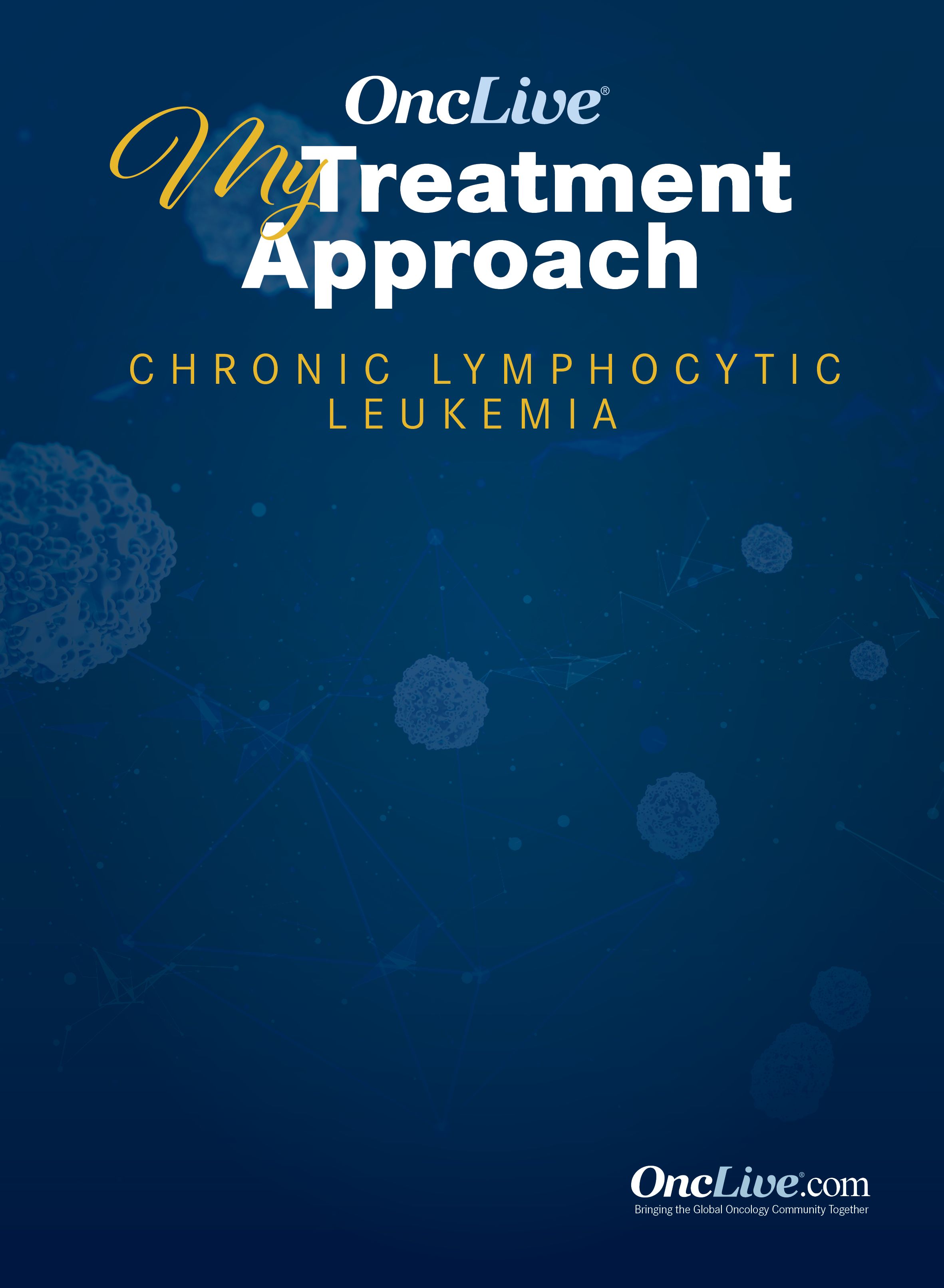BTK Combos Seek to Raise the Bar in CLL Treatment Paradigm
Tara Graff, DO, highlights active areas of exploration that are generating excitement in chronic lymphocytic leukemia.
Tara Graff, DO

The addition of BTK inhibitors to the treatment arsenal for patients with chronic lymphocytic leukemia (CLL) has resulted in improved survival and quality-of-life (QoL) outcomes, according to Tara Graff, DO, and the next steps for research is to examine these agents head-to-head, as well as in doublet and triplet regimens, in the hopes of providing added benefit.
“This is an exciting time for the field of CLL. Among the many hematologic malignancies, CLL seems to be on the frontline now, especially in terms of the different therapies [available] and research [that is being done],” Graff said. “We're offering our patients better treatments that are allowing them to live longer, with a better quality of life [QoL]. This is very important. We are talking about a chronic disease that is not curable, so the fact that we’re able to help patients maintain their QoL is astonishing.”
The emergence of the BTK inhibitors ibrutinib (Imbruvica), acalabrutinib (Calquence), and zanubrutinib (Brukinsa) into the treatment paradigm improved outcomes for patients with this disease. To build on that benefit, investigators are now investigating these agents in novel combination regimens. Triplet approaches are an important area of interest, according to Graff.
For example, the time-limited combination of ibrutinib, venetoclax (Venclexta), and obinutuzumab (Gazyva) was found to elicit an overall response rate of 84% in treatment-naïve patients with CLL and 88% in those with relapsed/refractory disease.1 Moreover, the acalabrutinib is also under investigation in combination with venetoclax and obinutuzumab or rituximab (Rituxan). Results have shown that that acalabrutinib in combination with a CD20 antibody and a BCL-2 inhibitor resulted in an ORR of 92% in those with relapsed/refractory disease; notably, the ORR was even higher in those who were treatment naïve, at 100%.2
Beyond the examination of novel triplet regimens, other areas of interest include the evaluation of noncovalent BTK inhibitors, such as LOXO-305, which was found to elicit an ORR of 63% per investigator assessment in patients with CLL and small lymphocytic leukemia.3
In an interview with OncLive, Graff, a hematologist oncologist at Mercy One, highlighted active areas of exploration that are generating excitement in CLL.
OncLive: How do you approach treating patients with CLL in the frontline setting? How do you navigate among the options available?
Graff: In my own practice, when making treatment decisions, I first consider the age of the patient, along with performance status. We need to determine what other health issue they have. Do they have atrial fibrillation, heart disease, or high blood pressure? We also must take tumor burden into consideration. How sick are they? Are they presenting with mild symptoms or do they have a giant spleen and large lymph nodes? In addition, we must look at the genomic aberrations. We forget how important the IGHV status, [the presence of] TP53 [mutations], and other molecular markers, is in terms of dictating how we should select therapy. These are all important factors to keep in mind.
A plethora of treatment options are now available in the frontline setting. BTK inhibitors are arguably the most important. We have acalabrutinib, as well as ibrutinib, which has been around for some time, and then there is also zanubrutinib. Venetoclax and obinutuzumab are also options for patients who are looking for a fixed-duration treatment. Chemoimmunotherapy is still [an approach that is used]; however, it’s falling by the wayside.
A lot of headway has been made with novel combination regimens in CLL. What are some of the emerging approaches that you are particularly excited about?
Currently, I’m excited about the combination of acalabrutinib and obinutuzumab; I use this regimen quite a bit in my practice. There is also venetoclax and obinutuzumab, which is another well-known strategy. However, I believe triplet therapies [may be even more] exciting. For example, we now have data on the combination of ibrutinib, venetoclax, and obinutuzumab. The exploration of a regimen comprised of acalabrutinib, venetoclax, and obinutuzumab is also underway. Zanubrutinib is also being explored [as a part of a combination]. I definitely look forward to seeing more data on these triplet therapies versus doublet and monotherapies.
What is some of the work that is being done with noncovalent BTK inhibitors?
Notably, LOXO-305 [is an agent of interest]. Efforts are focused on determining what to do in patients who have mutations that are making them intolerant or unable to respond to the traditional inhibitors: acalabrutinib, ibrutinib, and zanubrutinib. We have a lot [of research] brewing, but we aren’t there yet. [More information on these agents will] be something to look forward to at [upcoming medical meetings].
How does your strategy change for patients with relapsed/refractory disease? Do you retest for mutations or aberrations?
I’m always looking at factors such as age at relapse and performance status. They may have had great performance status years ago, but not anymore. Tumor burden is also important in this setting, along with understanding how they relapsed.
We also must determine what therapies patients received in the past. Many patients who relapse may have previously received chemoimmunotherapy. As such, we must look at their bone marrow and determine the effect on that.
Moreover, we must also retest for genomic aberrations. The only one we don’t retest for at the time of relapse is the IGHV mutational status, although the rest must all be retested for. After putting all of these pieces together, we can then determine which drug to use.
If a patient is on a proton pump inhibitor (PPI), does this effect your treatment decision?
Yes and no. Some patients are on a PPI and don’t need to be. They have a little bit of reflux, were never trialed on an H2 blocker, or were given pantoprazole sodium [Protonix] or omeprazole [Prilosec] right away. Some may go to the supermarket and grab pantoprazole sodium over the counter, without knowing if it’s the best option for them.
Bearing this in mind, I try to figure out why they are on a PPI to help determine whether they can be taken off and switched to an H2 blocker. If that is the case, I would use acalabrutinib because this is a well-tolerated drug, and the data are excellent; as such, it’s usually my go-to choice.
If they’re on a PPI twice daily for Barrett's esophagus and cannot be removed from it, then I would have to consider zanubrutinib or ibrutinib. With zanubrutinib, we know the PPI doesn’t have much of an effect on absorption or efficacy. The safety profile with this agent also looks good compared with ibrutinib. There aren’t any cross-trial comparisons yet; however, in terms of tolerance, this would likely be my next choice if they cannot come off a PPI.
Could you further expand on how age and prior lines of therapy impact the treatment selection process?
For patients who are older, who have received prior lines of therapy, have beaten-up bone marrow, and other comorbidities, I will usually go with acalabrutinib. The data regarding atrial fibrillation and hypertension are quite good, and the risks are low [with this agent]. As such, acalabrutinib monotherapy is typically my choice for those who relapse. We can also look at venetoclax and rituximab for fixed-duration therapy, but we do need to worry about cytopenias and further bone marrow suppression with this regimen. The data are good, but there is just more to consider [with this approach]; this is especially true when we are treating older patients with heavily pretreated bone marrow.
Notably, during the coronavirus disease 2019 pandemic, BTK inhibitors are a more friendly drug selection because you don’t need do close monitoring in terms of counts, [and you can avoid] multiple office visits. We don’t see the profound neutropenia that we do with venetoclax and rituximab.
Where should future research efforts focus?
The big question is, which BTK inhibitor should we use? Which agent is better and has less adverse effects [AEs]? We know the data from their own individual studies; [these options are] all excellent. However, comparing these therapies [together] would be very helpful in terms of making treatment decisions, although [an ongoing trial] is currently [comparing] acalabrutinib with ibrutinib [at least]. Many are so used to using ibrutinib that they don’t always look at all the increased AEs, such as high blood pressure, myalgias, and atrial fibrillation. [Ibrutinib] is the old standby, whereas acalabrutinib and zanubrutinib [appear to] fare better in that regard. We need data comparing all 3 agents, side-by-side-by-side.
More efforts should focus on further exploration of triplet therapies. Are triplets better than doublets? Also, we also should focus on sequencing. Now that we have all these drugs, which should we use first? Is there a regimen that will make all subsequent regimens work better? Some data have shown that you could prime the cells and the immune system for responses later down the road. [We need to explore this further].
References
1. Rogers KA, Huang Y, Ruppert AS, et al. Phase II study of combination obinutuzumab, ibrutinib, and venetoclax in treatment-naïve and relapsed or refractory chronic lymphocytic leukemia. J Clin Oncol. 2020;38(31):3626-3637. doi:10.1200/JCO.20.00491
2. Woyach JA, Blachly JS, Rogers KA, et al. Acalabrutinib in combination with venetoclax and obinutuzumab or rituximab in patients with treatment-naïve or relapsed/refractory chronic lymphocytic leukemia. Blood. 2020;136(suppl 1):16-18. doi:10.1182/blood-2020-136317
3. Mato AR, Pagel JM, Coombs CC, et al. LOXO-305, a next generation, highly selective, non-covalent BTK inhibitor in previously treated CLL/SLL: results from the phase 1/2 BRUIN study. Blood. 2020;136(suppl 1):35-37. doi:10.1182/blood-2020-134970




